Robotic rehabilitaion and physiotherapy
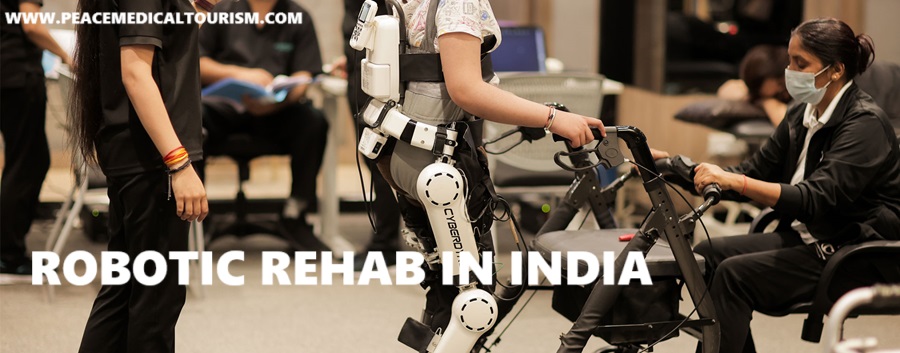
1- WHAT ARE ROBOTIC REHABILITATION AND PHYSIOTHERAPY?
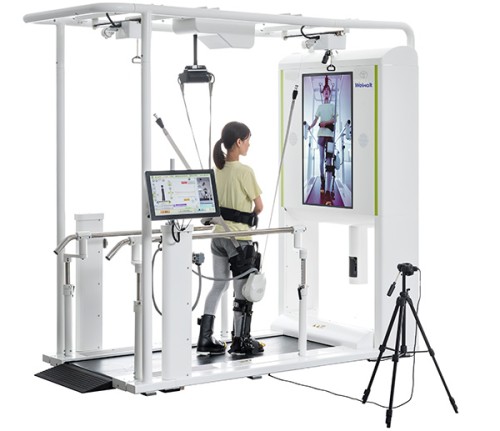
Robotic rehabilitation physiotherapy is an advanced form of physical therapy that uses robotic systems to aid in the rehabilitation of patients with various physical impairments. This approach combines robotics technology with traditional rehabilitation techniques to enhance the recovery process, improve patient outcomes, and increase the efficiency of rehabilitation.
Key features and benefits of robotic rehabilitation physiotherapy include:
- Precision and Consistency: Robotic systems can provide precise and consistent movements, ensuring that patients perform exercises correctly and safely.
- Customizable Therapy: The therapy can be tailored to meet the specific needs and abilities of each patient, allowing for personalized rehabilitation plans.
- Enhanced Monitoring: Robotic systems often come with integrated sensors and software that monitor the patient's progress in real-time. This data can be used to adjust the therapy as needed and track improvements over time.
- Increased Motivation: Interactive and engaging robotic systems can motivate patients to participate more actively in their rehabilitation, potentially leading to better outcomes.
- Assistance with Complex Movements: Robots can assist patients in performing complex or difficult movements that they might not be able to do on their own, facilitating a more comprehensive rehabilitation process.
- Objective Assessment: Robotic systems can provide objective measurements of a patient's performance and progress, aiding therapists in making more informed decisions about the treatment plan.
- Applications: Robotic rehabilitation physiotherapy can be used for a variety of conditions, including stroke, spinal cord injuries, traumatic brain injuries, orthopedic injuries, and neurological disorders.
Examples of robotic rehabilitation devices include:
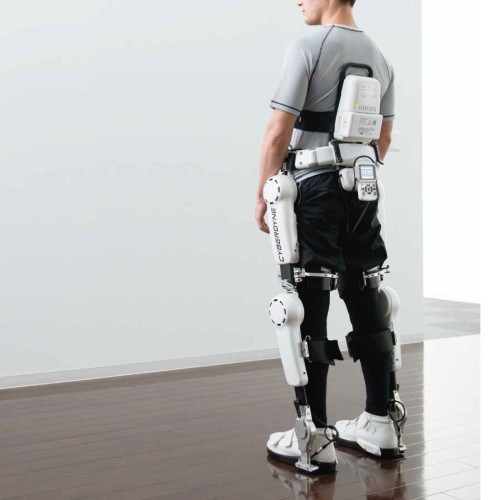
- Exoskeletons: Wearable robotic suits that assist with walking and other movements.
- Robotic Arms and Hands: Devices that help with upper limb rehabilitation.
- Treadmill Robots: Systems that support and guide patients while walking on a treadmill.
- Virtual Reality (VR) Systems: Combined with robotic devices to create immersive rehabilitation environments.
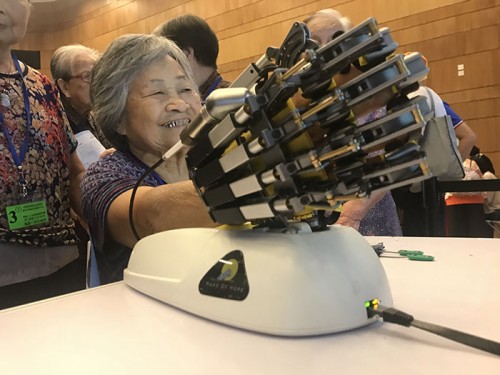
Robotic rehabilitation physiotherapy represents a significant advancement in the field of physical therapy, offering new possibilities for improving patient outcomes and enhancing the rehabilitation process.
2- WHO IS TARGET PATIENT OF ROBOTIC REHABILITAION AND PHYSIOTHERAPY?
Robotic rehabilitation can benefit a wide range of patient populations, including:
- Stroke Survivors: Robotic rehabilitation can help stroke patients regain motor function, improve mobility, and enhance their ability to perform daily activities.
- Spinal Cord Injury (SCI) Patients: Robotics can assist in retraining muscles, improving strength, and enhancing mobility for individuals with spinal cord injuries.
- Traumatic Brain Injury (TBI) Patients: Robotic devices can aid in the recovery of motor skills and cognitive functions, helping TBI patients regain independence.
- Orthopedic Patients: Individuals recovering from surgeries or injuries (e.g., joint replacements, fractures) can benefit from precise and controlled rehabilitation exercises provided by robotic systems.
- Neurological Disorder Patients: Patients with conditions such as Parkinson’s disease, multiple sclerosis, and cerebral palsy can use robotic rehabilitation to improve motor function and reduce symptoms.
- Amputees: Robotic prosthetics and rehabilitation devices can help amputees regain function and adapt to their prosthetic limbs.
- Elderly Patients: Robotics can provide safe and effective rehabilitation for elderly patients, helping them maintain mobility and independence.
- Pediatric Patients: Children with developmental disorders or congenital conditions can benefit from engaging and adaptive robotic rehabilitation to improve their motor skills and coordination.
- Patients with Musculoskeletal Disorders: Individuals with conditions like arthritis or chronic pain can use robotic rehabilitation to manage pain and improve joint function.
- Post-Surgical Patients: Those recovering from various surgeries can benefit from targeted and efficient rehabilitation to speed up recovery and improve outcomes.
Robotic rehabilitation offers the advantage of personalized, precise, and consistent therapy, which can significantly enhance the rehabilitation process for these diverse patient populations.
3- WHAT IS THE ADVANTAGES OF ROBOTIC REHABILITAION AND PHYSIOTHERAPY?
Robotic rehabilitation offers several advantages that enhance the recovery process for patients. These benefits include:
- Precision and Consistency: Robotic systems deliver precise and repeatable movements, ensuring exercises are performed correctly each time, which is crucial for effective rehabilitation.
- Personalized Therapy: Robots can adapt to the individual needs and progress of each patient, providing customized rehabilitation programs that address specific deficits and goals.
- Enhanced Monitoring and Feedback: Integrated sensors and software in robotic systems provide real-time data on a patient’s performance, allowing therapists to monitor progress closely and make informed adjustments to the therapy plan.
- Increased Motivation and Engagement: Interactive robotic systems, often combined with virtual reality or gamification, can make rehabilitation exercises more engaging and enjoyable for patients, which can increase their motivation and adherence to the therapy regimen.
- Improved Outcomes: The precise and controlled nature of robotic rehabilitation can lead to better outcomes in terms of motor recovery, functional improvement, and overall quality of life for patients.
- Greater Intensity and Frequency of Therapy: Robotic systems can support more intensive and frequent rehabilitation sessions than might be possible with manual therapy alone, potentially speeding up the recovery process.
- Support for Complex Movements: Robots can assist patients in performing complex or difficult movements that they might not be able to do independently, facilitating a more comprehensive rehabilitation process.
- Objective Assessment: Robotic systems provide objective measurements of a patient’s performance, allowing for accurate assessment and documentation of progress over time.
- Safe and Controlled Environment: Robots offer a controlled and safe environment for patients to practice movements, reducing the risk of injury during rehabilitation.
- Reduced Physical Strain on Therapists: The use of robotics can reduce the physical demands on therapists, allowing them to focus more on planning and supervising therapy sessions rather than performing repetitive manual tasks.
- Scalability and Accessibility: Robotic rehabilitation can be scaled to serve more patients efficiently, potentially making high-quality rehabilitation more accessible to a broader population.
These advantages make robotic rehabilitation a valuable tool in the field of physical therapy, providing significant benefits to both patients and healthcare providers.
4- WHAT IS SCUESS RATE OF ROBOTIC REHABILITAION AND PHYSIOTHERAPY?
The success rate of robotic rehabilitation and physiotherapy can vary based on several factors, including the type of condition being treated, the specific robotic system used, the duration and intensity of the therapy, and individual patient characteristics. However, research and clinical evidence generally indicate positive outcomes for many patients who undergo robotic rehabilitation. Here are some key points about the success rates:
- Stroke Rehabilitation: Studies have shown that robotic rehabilitation can significantly improve motor function, walking ability, and upper limb mobility in stroke patients. Meta-analyses of clinical trials suggest that robotic therapy is at least as effective as traditional therapy and often more effective, particularly when combined with conventional rehabilitation.
- Spinal Cord Injury: Robotic-assisted gait training and upper limb therapy have shown promising results in improving motor function, strength, and independence in patients with spinal cord injuries. Success rates vary, but many studies report significant improvements in mobility and daily functioning.
- Orthopedic Rehabilitation: Robotic devices used in orthopedic rehabilitation, such as after joint replacement or fractures, have demonstrated improved outcomes in range of motion, strength, and overall functional recovery compared to traditional therapy alone.
- Neurological Disorders: Patients with conditions like Parkinson’s disease, multiple sclerosis, and cerebral palsy have shown improvements in motor function, balance, and coordination through robotic rehabilitation. Success rates depend on the specific condition and severity, but many patients experience meaningful improvements.
- General Physical Therapy: Robotic systems can enhance the effectiveness of general physical therapy by providing consistent and precise movements, leading to better adherence to therapy protocols and improved outcomes.
- Pediatric Rehabilitation: Children with developmental and congenital conditions have benefited from robotic rehabilitation, with improvements in motor skills, coordination, and overall function.
While exact success rates can vary, the following general trends are observed:
- Upper Limb Rehabilitation: Studies report that robotic therapy can lead to significant improvements in arm and hand function, with success rates often ranging from 60% to 80% in achieving meaningful functional gains.
- Lower Limb Rehabilitation: For gait training and mobility, success rates are often similar, with many patients achieving improved walking ability and independence.
- Patient Satisfaction: High levels of patient satisfaction are commonly reported, with many patients finding robotic therapy more engaging and motivating than traditional methods.
It is important to note that while robotic rehabilitation shows high potential, it is most effective when used as part of a comprehensive rehabilitation program that includes conventional therapy, patient education, and home exercise programs. Individual outcomes can vary, and ongoing research continues to refine and improve the effectiveness of these technologies.
4- WHAT IS THE DISADVANTAGES OF ROBOTIC REHABILITATION AND PHYSIOTHERAPY?
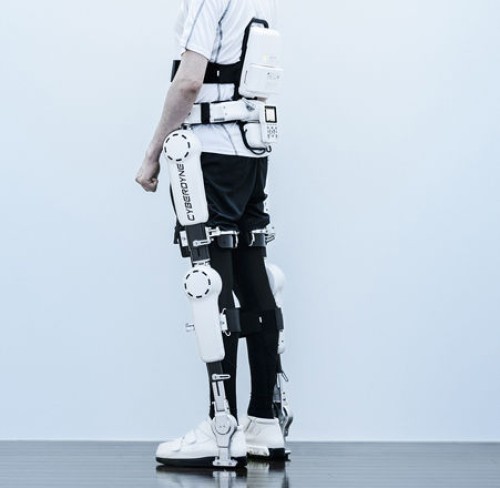
While rehabilitation robotics offer numerous advantages, there are also several disadvantages and challenges associated with their use:
- High Cost: Robotic rehabilitation systems can be very expensive to purchase, maintain, and operate. This can limit their availability to only well-funded healthcare facilities and may not be accessible to all patients.
- Limited Accessibility: Due to the high costs and the need for specialized equipment and trained personnel, robotic rehabilitation may not be widely available, especially in rural or underserved areas.
- Technical Challenges: Robotic systems can be complex and may require regular maintenance and calibration. Technical issues or malfunctions can disrupt therapy sessions and reduce the overall effectiveness of the rehabilitation program.
- Dependency on Technology: There is a risk that patients and therapists may become overly reliant on robotic systems, potentially neglecting the importance of manual therapy techniques and the human element of care.
- Learning Curve: Both patients and healthcare providers may need time to become familiar with using robotic systems effectively. This learning curve can delay the start of effective therapy and require additional training.
- Patient-Specific Limitations: Not all patients may be suitable candidates for robotic rehabilitation. Factors such as severe spasticity, joint deformities, or cognitive impairments may limit the effectiveness or feasibility of robotic therapy for certain individuals.
- Limited Range of Motion: Some robotic systems may have limitations in the range of motion they can provide, which might not fully meet the needs of all patients or may not be suitable for all types of rehabilitation exercises.
- Reduced Personal Interaction: The use of robotics in rehabilitation can potentially reduce the amount of personal interaction between patients and therapists, which is an important component of the therapeutic process and can impact patient motivation and emotional support.
- Data Privacy and Security: The use of advanced robotic systems that collect and store patient data can raise concerns about data privacy and security. Ensuring that patient information is protected and used appropriately is a critical consideration.
- Ethical and Psychological Concerns: The integration of robots into rehabilitation raises ethical questions about the role of technology in healthcare and its impact on the patient-therapist relationship. Additionally, some patients may feel uncomfortable or intimidated by the use of robotic devices.
- Standardization and Regulation: The field of robotic rehabilitation is still evolving, and there may be a lack of standardized protocols and regulatory guidelines to ensure consistent and safe use of these technologies across different settings.
While these disadvantages highlight some of the challenges associated with rehabilitation robotics, ongoing advancements in technology, research, and clinical practice aim to address these issues and enhance the overall effectiveness and accessibility of robotic rehabilitation.
5- WHAT IS THE COST OF ROBOTIC REHABILITATION AND PHYSIOTHERAPY IN INDIA?
The cost of robotic rehabilitation in India can vary widely depending on several factors, including the type of robotic system used, the duration and frequency of therapy sessions, the specific medical condition being treated, and the healthcare facility providing the service. Here are some general insights into the costs:
- Initial Evaluation: An initial evaluation by a specialist to determine the suitability of robotic rehabilitation for the patient may cost between 7000 to 12000 USD .
- Session Costs: The cost of individual robotic rehabilitation and physiotherapy cost in India per sessions can range from 300 to 500 USD per session, depending on the complexity of the therapy and the specific robotic equipment used.
- Packages: Many healthcare facilities offer packages for multiple sessions, which can reduce the overall robotic rehabilitation and physiotherapy cost in India per session. A package of 10-20 sessions might range from 3000 to 4000 USD or more.
- Inpatient Programs: For patients requiring intensive rehabilitation, inpatient programs that include robotic rehabilitation and physiotherapy cost in India between per week, depending on the level of care and services provided.
- Specialized Equipment: Some advanced robotic systems, such as exoskeletons or high-end gait trainers, might incur additional charges due to their high operational costs.
- Geographic Location: robotic rehabilitation and physiotherapy cost in India can also vary based on the location of the healthcare facility. Urban centers like Mumbai, Delhi, Bangalore, and Chennai may have higher costs compared to smaller cities or rural areas.
- Type of Facility: Private hospitals and specialized rehabilitation centers might charge more than government hospitals or non-profit organizations.
.
It is advisable for patients and their families to contact specific hospitals or rehabilitation centers to get detailed information on the costs and available packages. Additionally, some health insurance plans may cover part of the cost of robotic rehabilitation, so it is worth checking with the insurance provider.
WHY IS INDIA THE BEST OPTION FOR ROBOTIC REHABILITATION AND PHYSIOTHERAPY?
India is becoming an increasingly popular destination for robotic rehabilitation and physiotherapy due to several key factors:
- Advanced Medical Facilities: India is home to many world-class hospitals and rehabilitation centers equipped with state-of-the-art robotic systems and advanced medical technology. These facilities offer high-quality care comparable to international standards.
- Highly Skilled Professionals: Indian healthcare providers, including physiotherapists and rehabilitation specialists, are highly trained and often have experience and education from top medical institutions both in India and abroad. Their expertise ensures effective and personalized patient care.
- Cost-Effective Treatment: The cost of robotic rehabilitation and physiotherapy in India is significantly lower than in many Western countries. Patients can receive high-quality care at a fraction of the cost, making it an attractive option for those seeking affordable treatment without compromising on quality.
- Comprehensive Care: Indian healthcare facilities often provide comprehensive care that includes not only robotic rehabilitation but also traditional physiotherapy, occupational therapy, and other supportive services. This holistic approach enhances patient recovery.
- Availability of Advanced Technology: Many Indian hospitals and rehabilitation centers have invested in the latest robotic rehabilitation systems, such as robotic exoskeletons, gait trainers, and robotic arms for upper limb therapy, ensuring access to cutting-edge treatments.
- Positive Outcomes: Numerous success stories and positive outcomes from patients who have undergone robotic rehabilitation in India contribute to the country's reputation as a preferred destination for such treatments.
- Medical Tourism Infrastructure: India has a well-developed medical tourism infrastructure, including dedicated services for international patients. This includes assistance with travel, accommodation, and post-treatment care, making it easier for patients from abroad to access treatment.
- Cultural and Language Comfort: Many healthcare professionals in India are proficient in English, which is an advantage for international patients. Additionally, the country's diverse and welcoming culture can make patients feel more comfortable during their stay.
- Research and Innovation: India is increasingly involved in medical research and innovation, including in the field of robotic rehabilitation. Ongoing research efforts contribute to the continuous improvement and adoption of advanced rehabilitation techniques.
- Customized Treatment Plans: Indian healthcare providers often offer personalized and patient-centric treatment plans tailored to the specific needs and goals of each patient, ensuring optimal outcomes.
These factors combine to make India a leading destination for patients seeking effective, affordable, and advanced robotic rehabilitation and physiotherapy.
CONTACT US ON WHATSAPP
+91 9582708782